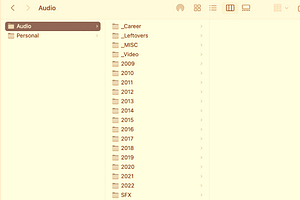
Quick guide to audio file management and naming conventions
I once asked a group of about eight audio makers about file management and the conversation almost ended in a
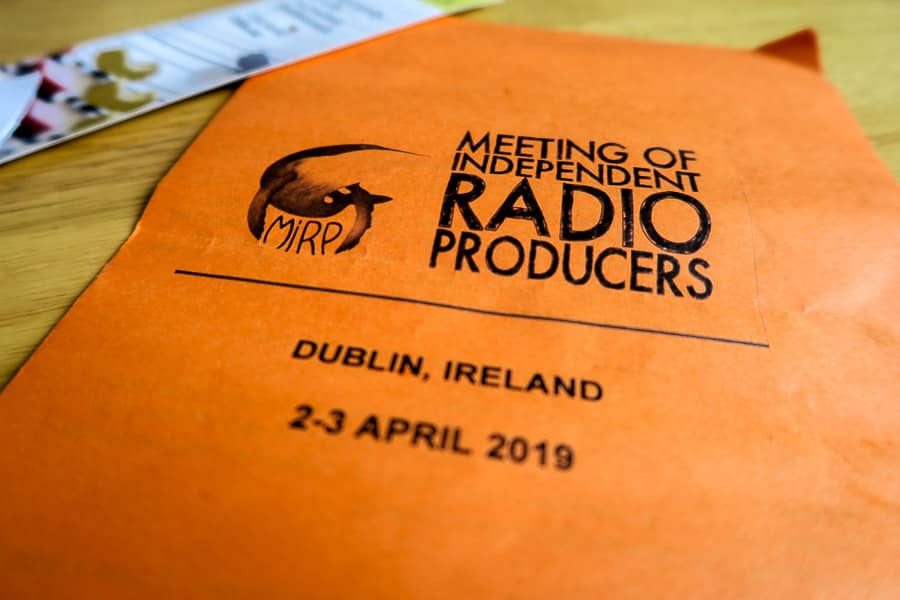
A flock of international audio producers stampeded the gates of Dublin Zoo on a crispy Spring morning. We’re here for the fourth Meeting of Independent Radio Producers (MIRP) conference.

After scones and coffee the day began with a broad industry view titled, The Evolving Landscape.
Veera Luoma-aho and Olli Sulopuisto are co-founders of the Finnish Jaksomedia podcast company. They openly discussed the challenges of making branded podcasts in a country with a limited population. Key to their success is becoming creative partners and managing client’s expectations. This includes understanding the client’s motivation and setting goals that run deeper than just numbers. Their pricing model requires a reasonable minimum spend/amount of episodes – this justifies the large upfront creative effort required in getting a podcast off the ground.

Australian public radio producer Sophie Townsend described her work juggling fiction production at ABC RN, which she enjoys, and the three or four personal stories she produces independently each year, which ‘feed her soul’. Big questions were asked by moderator Katharina Smets including, what are the pitfalls to watch out for with podcasting or creative storytelling? Sophie flagged we should stop looking at podcasting as a genre – it’s a distribution platform. This was followed by a reassurance, “I kind of think everything will be ok” she said (insert fire dog meme). Me too Sophie.
Next was the first of two showcase listening sessions, that featured pieces created by people in the room. The first highlight was hearing Neil Sandell and Mira Burt-Wintonick of CBC’s Love Me discuss The Painting. It’s the story of a man who falls in love with a woman… in a painting he’d picked up at a flea market. With a wonderfully soft pace and thoughtful script read, this story runs deep, reflecting what Neil was feeling during a life-changing move around the world.

My other highlight from this session was a brilliantly creative experiment by renaissance-producer, Liam Geraghty. He recorded an interview, and instead of cutting out all of the umms and ahhhs, he cut out all the interview. What we’re left with is a bunch of umms and ahhh. Just genius. It was produced for The Organist, listen here (it’s the first story).

Shout out to This Wachter who shared an excerpt from a very personal story. Interestingly, he decided not to broadcast it, but instead rework it as a live show. He echoed the sentiment that if we’re doing stories that are inherent to the medium then the audio has to do the heavy lifting. Interesting.
The words ‘Diversity panel’ has become triggering in the Australian podcast landscape over recent years. The concept can be fraught, especially when people from diverse backgrounds are only represented on a panel about diversity. So as the Diversity On Air session began I shut one eye in trepidation.
Ngoc-Tran Vu from the Association of Independents in Radio (AIR) said the point of their organisation was to create a network that supports producers, and this includes new voices. She asked why are certain people or stories told again and again? But Tran went further, saying it’s not enough to plug in someone’s voice – their story and ‘magic’ need to be protected. In terms of ‘whose story is it?’ Tran said we need to be clear and upfront about motivations and intentions: “are we meeting people where they are at?”. Ariana Martinez explained how an opportunity with AIR had kick-started her career. She encouraged everyone to work to make sure we’re telling stories responsibly. And if someone from a minority community tells you they can tell their story, believe them.

#whitepodgymiddleagedmen has now been mentioned across sessions.
Lunch was a time to get some air and get lost in Dublin zoo. Did I mention this conference was in a zoo!? Elephants, rhinos, a hippo, oh my. It was cool.



I was late to the first session back because I had gotten lost in the zoo. When I walked in Helen Zaltzman (The Allusionist, Answer Me This!) and Colette Kinsella (Language Bites, Science Drops) were playing examples of times it all went wrong, and what they learnt through those experiences.
After a phone interview was impossible to hear, Helen learned to transcribe her episodes. This is advantageous for a number of reasons, but interestingly it’s become a useful tool for her to be able to refer back to when making new episodes.
Colette played examples from her highly engaging, short form science podcast. She uses a lot of sound effects to push episodes along, but she made it clear – if you’re not hearing sound effects, or it’s taking too long to find the right one, just leave them out. Sometimes the best thing is to let the script and music do the work for you.

The second listening showcase of the day saw Canadian Jess Shane from sound art podcast, Constellations and Australian contributor, Camilla Hannan, play an excerpt from the episode, ‘it was right there in front of you’. This was followed by Camilla throwing down the gauntlet. She stated she was disappointed with a lot of sound design in podcasts. In short: lift your game everyone. Big call in a room full of creative audio storytellers, but as I always stress, you’ve got to speak your truth.
During the tea break I pretended to be from New Zealand.
Brooklyn-based radio producer Thomas Reintjes jumped up to say he’d built a site for us to stay connected. He’d printed bookmarks and shared them round. What a legend. Check it out trks.ac.
The jet lag began to kick in but Johnny Spence was here to ensure we weren’t going to drift off. The process of making radio is often unhealthy for our body. Making radio should be healthy. His session titled, Reattaching Your Ears made the case for why radio producers should think about body awareness during the editorial process. We are in the deep end now. If dance is less reliant on music and focuses on movement, and radio digs into more experimental formats then maybe there’s more crossover than we think? Let me know if I’ve got that wrong Johnny.

Basically, how does text interact with the body? He’s worked with dancers to find out… and ping, here are the dancers live streaming from another country. They are going to run an ‘editorial embodiment exercise’ to help us understand what the hell Johnny is on about. Push the chairs back, here we go.

He quoted Bertold Brecht’s 1932 essay, and stressed radio is not about distribution, but about communication. How can the audience speak, as well as hear? This brought us perfectly to the final session of the day.
No talking, time for listening. Local Irish writer and producer Zoe Comyns performed a one hour piece titled ‘EHMIT – An Audible Life’. The blurb read, ‘When a radio producer finds 100-year-old Marconi Code books in a junk shop, she starts to read the code lists obsessively and twist them into her own life story’. It was an appropriate audience for a radio story about a radio story maker. Hats off to the surround sound experience, effortlessly played and balanced by sound engineer Brendan Jenkinson. The piece asked more questions than gave answers, which might be a cliche thing to say, but I’m jet lagged and that’s how I feel. We sat and let it wash over us, the morse code tapping into our bones and memories.
That was MIRP 2019. I’d end with something metaphoric about likening audio storytelling to being a zoo, or an animal. Or something. But I don’t have time. Hearsay festival starts in a couple of hours and we’ve got to go pick up the car.


I once asked a group of about eight audio makers about file management and the conversation almost ended in a
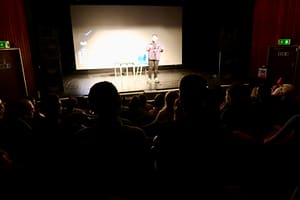
The alleyway is stereotypically dark and long. It’s after 1am, I have no idea where I am and my phone’s about to die.
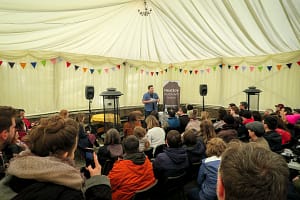
Here’s what to expect from the ‘Who gives a fork?’ live show touring Aug/Sept 2022.
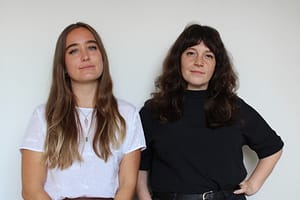
Jill Beytin, co-founder of Bear Radio, describes where the local scene is at including a juicy story about a recent controversy with one of Germany’s public broadcasters.
get the latest news about upcoming projects:
© 2021 mike williams